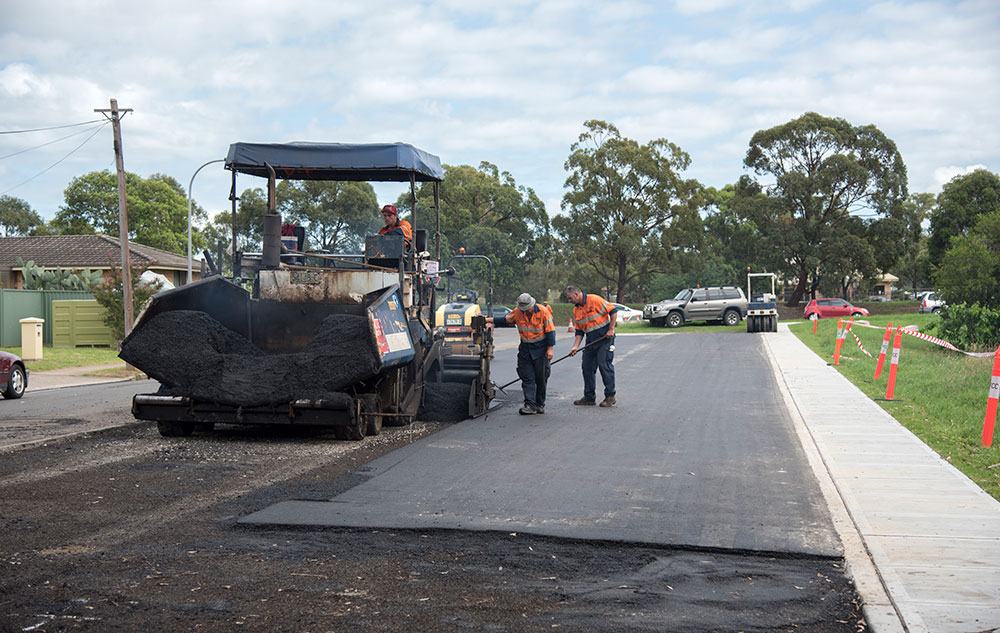
Local, Social and Community Infrastructure
Local government owns and manages $160 billion in infrastructure assets, including local roads, bridges, pedestrian and cycle networks, local water and sewerage utilities, stormwater and water management, regional airports, parks, pools, recreation, cultural, family and community services facilities, and a range of other infrastructure vital to liveable local communities. As the closest sphere of the government to the community, local government is best placed to plan for and deliver this essential local infrastructure, and requires fair funding support to ensure it is in place.
The pre-announced early childcare and preschool packages do go some way to meeting LGNSW’s Pre-Budget submission, which called on the Government to invest in quality, affordable, accessible early childhood education across the state. And while we certainly welcome initiatives that allow more families to access care, it is not yet clear whether council-run providers will be eligible for the Budget funding offered to private providers. Rest assured LGNSW will be advocating strongly for council inclusion in this funding program, and will continue our push for funding designed to help address severe staffing shortages in the childcare sector.
Our Pre-Budget Submission also called for increased investment in water security, and we welcome the Budget commitment of $369.6 million to ongoing financial and technical support in town water supply projects under the Safe and Secure Water Program. This four-year funding commitment includes an additional $90 million in new funding, although LGNSW believes it falls well short of the actual requirements in this area.
We welcome the $19.8 million funding to plan for the State’s water future through the NSW Water Strategy, and particularly this plan’s inclusion of an integrated set of initiatives designed to deliver the first Aboriginal Water Strategy for NSW.
Far less satisfying is the limited funding of $9.4 million for early works on the Wyangala and Dungowan Dams in 2022-23. However the ongoing financial viability of these projects is conditional on a 50% co-contribution by the Commonwealth, prompting significant concern. about their future of these projects.
With NSW councils responsible for the management of more than 90% of the state’s roads, it is unsurprising our sector was looking for increased funding to reduce the $1.7 billion road and infrastructure maintenance backlog. However, Budget funding allocated to a range of road programs falls well short of this expectation, with funding levels largely unchanged.
According to the Budget papers, $201.2 million will be allocated to a range of regional transport programs including the Fixing Country Bridges program; continued planning and delivery of the 16 Cities program; and supporting regional councils through the Fixing Local Roads program. The upgrading and replacement program Bridges for the Bush will receive $153 million under the Restart NSW commitment.
The upgrading and replacement program Bridges for the Bush will receive $153 million under the Restart NSW commitment.
Finally, councils will again be disappointed that a meagre $1.93 million over two years has been allocated to support the upgrades of priority regional roads as part of the Regional Road Transfer and Road Classification Review.
The most positive Budget outcomes for local government under this advocacy priority were:
- $2.4 million for the Smart Regional Spaces partnership with two Sydney universities, designed to support 91 councils as part of the Smart Cities Strategy. We’re pleased to see that this program specifically seeks to help bring smart technology in transport, communications and energy efficiency to regional areas. On the other hand, we remain concerned that councils impacted by financial constraints and skills shortages may find themselves hard-pressed to take up potential opportunities.
- $49 million over four years for the maintenance and upgrading of Crown Lands, which is good news for regional tourism and economic activity in rural and regional communities.
BACK TO NEWS